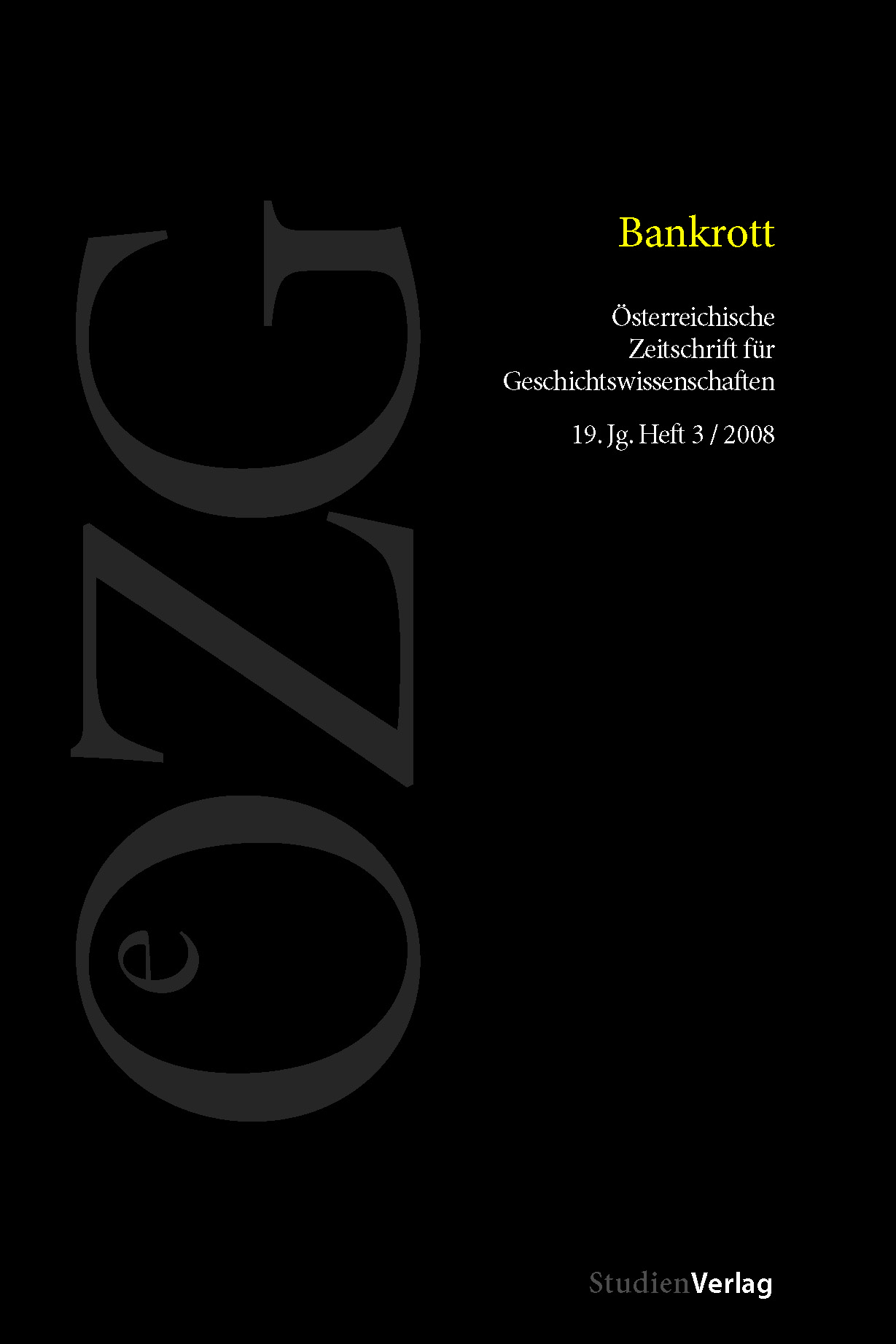Firmenbankrotte, Sozialbeziehungen und Konfliktlösungsmechanismen in süddeutschen Städten um 1600
Die Perspektive der Zeitgenossen
DOI:
https://doi.org/10.25365/oezg-2008-19-3-2Abstract
Research on the bankruptcies of south German merchant companies in the early modern period has largely focused on the spectacular crashes of major international firms in Augsburg from the Höchstetter bankruptcy in 1529 to the insolvency of Konrad Roth in 1580. These bankruptcies have shaped the image of south German merchants as risk-takers and speculators who ventured into new fields of commerce with huge amounts of outside capital. Viewed against this background, a look at the lesser known bankruptcies during the period from 1580 to 1620 sheds new light on their causes as well as their economic and social contexts. The article demonstrates that merchants’ bankruptcies were no less frequent in the major south German cities during this period than before 1580. Especially in Nuremberg, firms actually failed more often in the years around 1600. An analysis of company structures in the context of cyclical and structural changes within the European economy shows that these bankruptcies were not so much due to risk-taking than to increasing competition and failure to adjust to changing market conditions. Moreover, bankruptcies after 1580 were less publicized than earlier crashes because south German cities had developed legal mechanisms for securing the bankrupts’ assets, satisfying creditors, and punishing fraudulent behaviour.


